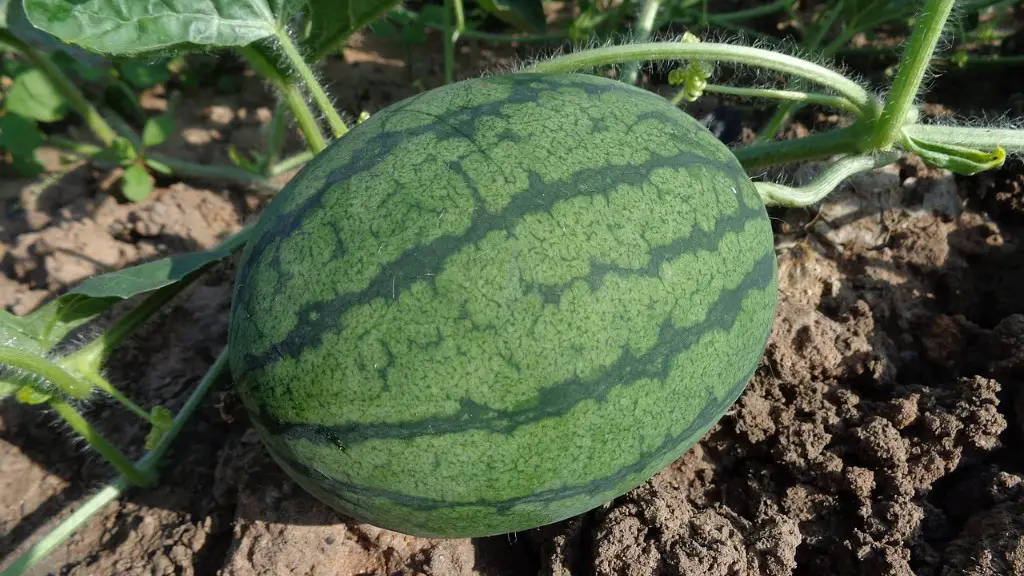Agriculture has been a part of human activity since before recorded history. It is believed to have started around 10,000 BC. Early farmers were hunter-gatherers who started practicing cultivation of crops and domestication of animals. This period is considered the Neolithic Era and it marks the transition from a nomadic lifestyle to one of being more settled. During this era, humans were able to gather a larger and more efficient food supply by planting fields of grain and other crops and by raising their own animals. Technological advances made during this period, such as the invention of the plow, enabled them to cultivate the land more easily.
Agriculture coincided with the rise of the development of complex civilizations in the Fertile Crescent and other parts of the world. This provided the foundation for the emergence of city-states and empires in Egypt, Mesopotamia, India, China, and the Americas. One of the main ways these civilizations were able to sustain their growth was through the farming of their lands. As agricultural techniques advanced, so did the complexity of their societies and the civilizations that emerged.
The Bronze Age, which spanned from 3000BC-1200BC, saw the emergence of more complex tools and farming techniques including the use of irrigation systems and multiple crop cultivation. The development of metallurgy and the use of bronze tools allowed farmers to more efficiently till and irrigate the land. This period is also credited with the introduction of advances such as animal-drawn plows, animal-driven mill wheels, and the domestication of horses, oxen, and donkeys.
The Iron Age, which spanned from 1200BC-600BC, saw the continued use and development of various agricultural techniques. This period brought advancements in metallurgy that allowed for the use of iron tools and weapons, as well as the mass production of pottery. The Iron Age also saw the emergence of fortified cities and the introduction of new crops, including wheat, barley, and olives.
The Roman period from 600BC-AD400 saw the expansion of agricultural techniques and the development of large, sophisticated estates called villas where large-scale agricultural production took place. Advances in engineering such as aqueducts enabled farmers to irrigate the land more efficiently. Roman agricultural advances also included the use of crop rotation, which enabled farmers to achieve higher yields.
The Middle Ages
The Middle Ages, from AD400-1450, saw the continued development of farming techniques and the expansion of agricultural technology. Horse and ox-drawn plows were used to cultivate the land and water wheels and windmills were developed to power millstones and other machinery. This period saw the development of more complex crop rotation systems and the use of fertilizers and other agricultural chemicals to increase yields. The growth of towns and cities during this period provided a market for agricultural products and enabled farmers to trade their goods with one another.
The Late Middle Ages, from 1450-1500, saw the emergence of new agricultural technologies such as the use of multiple cropping, which enabled farmers to produce more crops per unit of land. During this period, crop rotation systems became increasingly complex, but most of the farming was still done by hand. This period also saw the introduction of new crops such as tobacco, potatoes, maize, and pumpkins.
The Renaissance, from 1500-1600, saw the emergence of large-scale agricultural production. This period is credited with the development of crop rotation systems that allowed for more efficient production of crops. During this time, new farming techniques and tools such as the horse harness, the steel plow, and the four-field rotation system were developed. The use of new crops such as maize and potatoes enabled farmers to increase their yields and provided new dietary options.
The 17th Century
The 17th century, from 1600-1750, saw a shift in farming practices. Improved crop rotation systems were developed and crop yields increased as new crops were introduced. The scientific study of agriculture was advanced during this period as well, with scientists such as van Helmont, Joan Baptista van Helmont, and Robert Hooke conducting experiments on plant growth and development. The development of new tools and techniques also enabled farmers to increase their yields and farming efficiency.
The Enlightenment period, from 1750-1800, marked a major shift in the agricultural sector. During this period, advances in biological science allowed for a greater understanding of the workings of plants and animals and the agricultural sector benefitted from this knowledge. This period also saw the introduction of new farming techniques such as the use of crop rotation and the application of fertilizers to improve crop yields. In addition, improvements in animal husbandry practices enabled farmers to increase their animal production.
The 19th Century
The 19th century, from 1800-1900, saw a period of rapid technological advances in the agricultural sector. This period is credited with the invention of the reaper and the mechanical cultivator, which allowed farmers to mechanize their farming operations. Advances in animal husbandry also enabled farmers to increase their animal production and efficiency. The use of crop rotation and the application of manures and other fertilizers to the soil also led to increased crop yields.
The 20th century, from 1900-2000, saw the emergence of new scientific and technological advances that changed the way farmers produced food and managed their land. Advances in genetics, crop science, and nitrogen fixation enabled farmers to increase their yields, while new tools and equipment such as tractors and combines allowed them to mechanize their operations. The availability of synthetic fertilizers and pesticides allowed farmers to reduce their use of manual labor and to produce more efficient, higher-yielding crops.
The 21st Century
The 21st century, from 2000 to present day, has seen the emergence of new technologies and techniques that are transforming the agricultural sector. Advances in precision agriculture, such as the use of drones and robotics, are allowing farmers to increase their yields while reducing their inputs. In addition, agtech start-ups are creating new products and services aimed at increasing farmers’ productivity, efficiency, and sustainability. The development of genetic engineering has also had a significant impact on the agricultural industry, allowing for the manipulation of genes to produce higher-yielding and disease-resistant crops.
The future of agriculture promises to continue the trend of technological advancement and innovation. Advances in artificial intelligence, robotics, and mechanization are set to revolutionize the industry by allowing for greater yields, more efficient and sustainable practices, and improved labor productivity. As the global population continues to increase, the need for food production is only going to become more pressing, and the role of technological innovation in agriculture will become ever more important.

